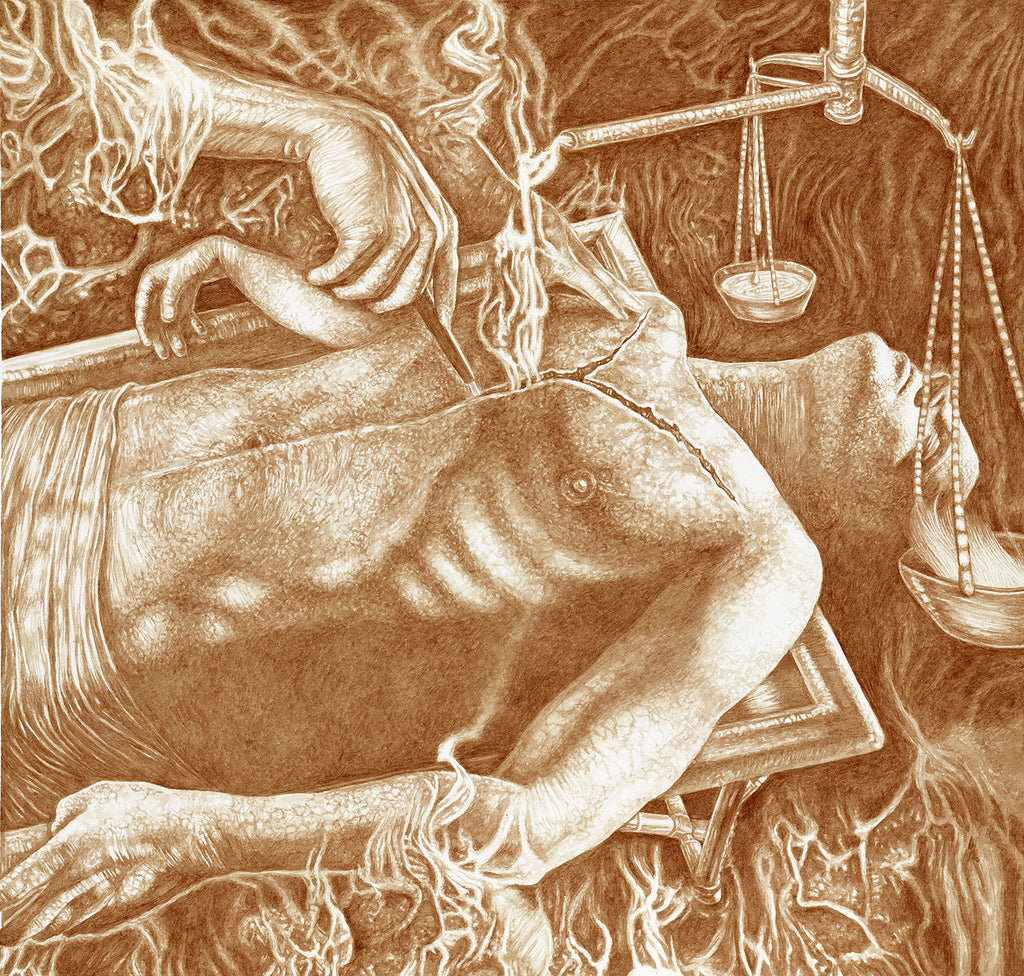
Autopsy of The Soul. Image courtesy the artist (detail).
Vincent Castiglia is an artist intently focused on the human condition. Castiglia's work viscerally meditates on the various intersections of body and mind. He creates using a mixture of blood and water, a simple yet emotive material when applied to paper. We had a chance to meet Vincent at this year's Maryland Deathfest in Baltimore. Please also enjoy a selection of related images provided by the artist.
What are you working on at the moment, any specific pieces or bodies of work?
Vincent Castiglia: I just finished a painting called, “The Wisdom of Hope.” It’s the fifth painting in the current body of work titled Autopsy of The Soul. The model and subject was my friend, Damien Echols, who was wrongly convicted of a crime and spent 18 years of his life on death row until exonerated of the charges a few years ago.
What kind of creative patterns, routines or rituals do you have for/during creation? You are well known for using your own blood. Is this something that is intertwined with your process?
VC: The medium is a very integral part of the process.
What specific tools for creation do you employ?
VC: Paintbrushes, blood, water, and archival paper. That’s really it… and individual containers for the blood.
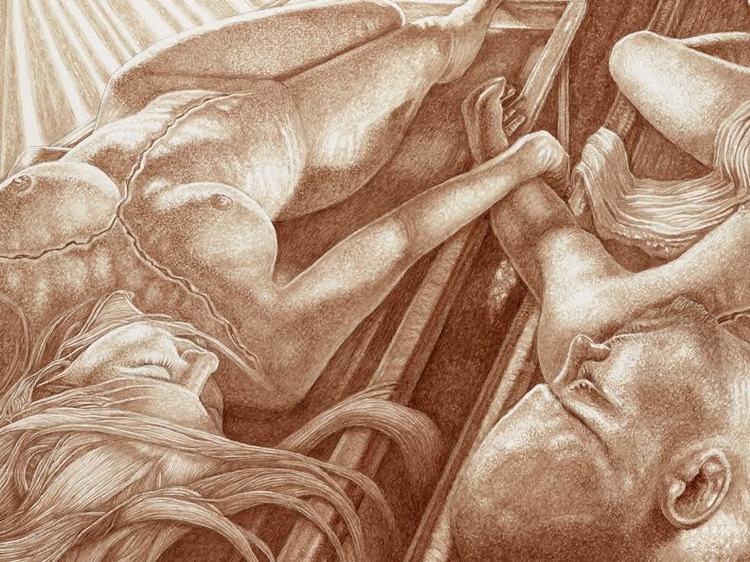
Beauty And Truth (Not Forgotten). Image courtesy of the artist VincentCastiglia.com.

Autopsy of The Soul. Image courtesy of the Artist.
Your work employs concepts of decay and the human condition. Are dark, outsider or occult themes central to your work as well?
VC: The work is experiential. That’s probably the best way I could describe it. The images are monochromatic tableaux, examining various stations of human experience. Which, I believe to be universal to humans, but each work also has personal information in it. They’re visual meditations on particular subjects, charged with the psychic energy of the medium. In other words; the nicest, most productive way of turning my ‘insides, out.’
You created album art for Triptykon’s 2010 release Eparistera Daimones, along with the masterful HR Giger. Can you explain this project and your output particularly?
VC: It was an honor to work on the band’s portrait painting for Triptykon’s debut album. While in Switzerland in 2008, frontman Tom Gabriel Fischer had asked me if I’d be interested in working on this aspect of the album art, which I was thrilled to do. My concept was to ask them all a series of questions in order to elicit key personality traits from each band member. Then, I associated them with the entity from the Goetia that was most comparable to them. All of the seals arranged within a circle form a seal for the band itself. Given that the album was a creative collaboration of their music, and of HR’s and my work, the project can be understood as a creative triptych unto itself. It’s a similar concept to Led Zeppelin’s Zoso.
In addition to the Triptykon project, you also created custom guitar artwork for Slayer’s Gary Holt. Do you feel that modern heavy music has a connection to your artwork?
VC: I’d have to answer yes. I think my work is now connected to modern heavy music in certain ways; for its themes and the medium, but also given the music related projects I’ve worked on.
Art created for Triptykon’s 2010 release, Eparistera Daimones.
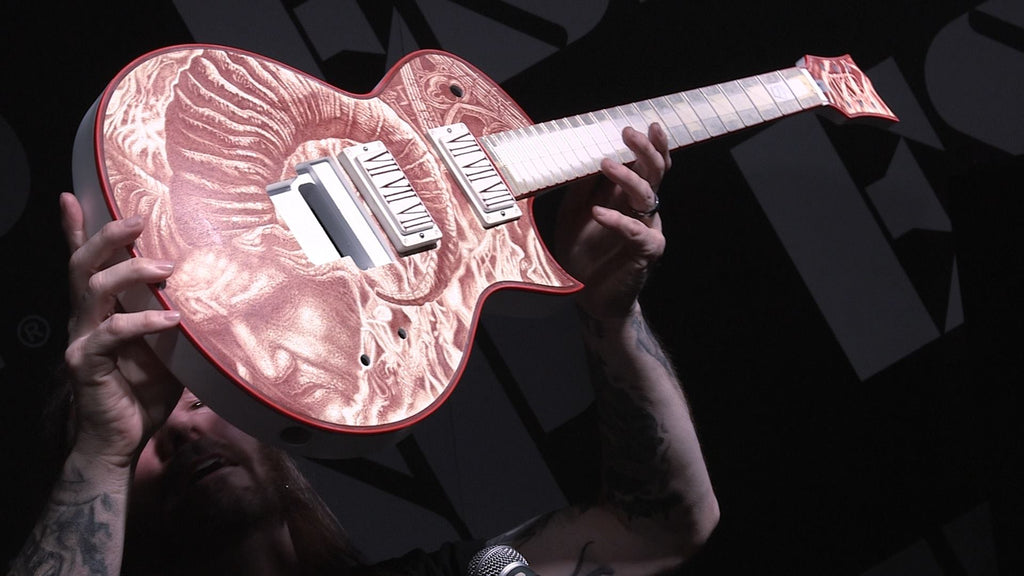
“The Eclipse,” Collection: Gary Holt.
Bloodlines: The Art and Life of Vincent Castiglia
What role does the artist, or specifically a ‘dark’ themed artist, have in modern society?
VC: I’m not certain that there is any one definitive role the artist plays in modern society. If I had to answer this question as concisely as possible - The role of the artist is to purge their thoughts and emotions in their work. In turn, the work should make the viewer feel and think in relation to the content. Have you looked at a piece of artwork that filled you with awe and contemplation? Have you also looked at a piece of art but felt and thought nothing? I believe that’s what distinguishes truly inspired art, those accompanying feelings, and wonder.
Do you consider art’s purpose a reflection of the world or a force for change? Or is it something else entirely?
VC: Art certainly does tend to act as a barometer for everything going on in the world, at least in certain areas of art. But it can, of course, also be a force for change. This new body of work, Autopsy of The Soul, is an examination of the world-soul. The weaknesses and the strengths, or the pathologies and the assets, of the ‘anima mundi,’ as seen through the lens of my own experience and perception.
What is the Bloodlines documentary and how did Bloodlines come about?
VC: Bloodlines: The Art and Life of Vincent Castiglia is exactly as titled. It's the official biopic on my work and life, directed by award-winning filmmaker John Borowski. John has directed, written and produced four serial killer films to date (currently streaming on Netflix). So I’m the first non-serial killer John has profiled. Initially, we thought it would exclusively deal with my art, but as the work is enmeshed very intimately with life (which is part of why I describe it as 'existential'), John felt the film had to encompass my entire life from birth to today.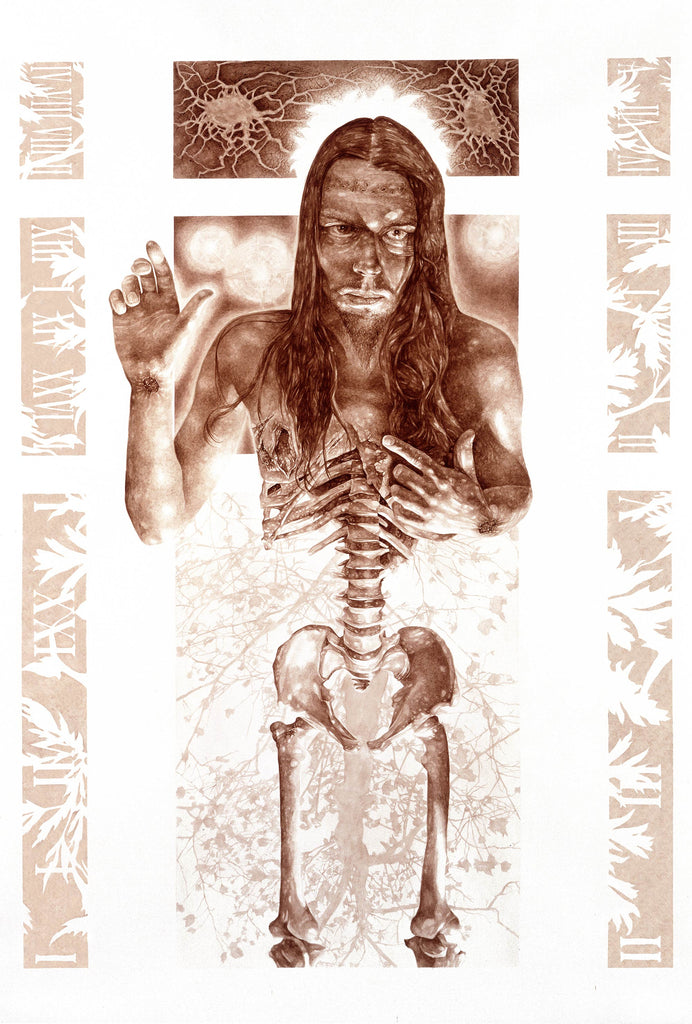
Strings of the Lash.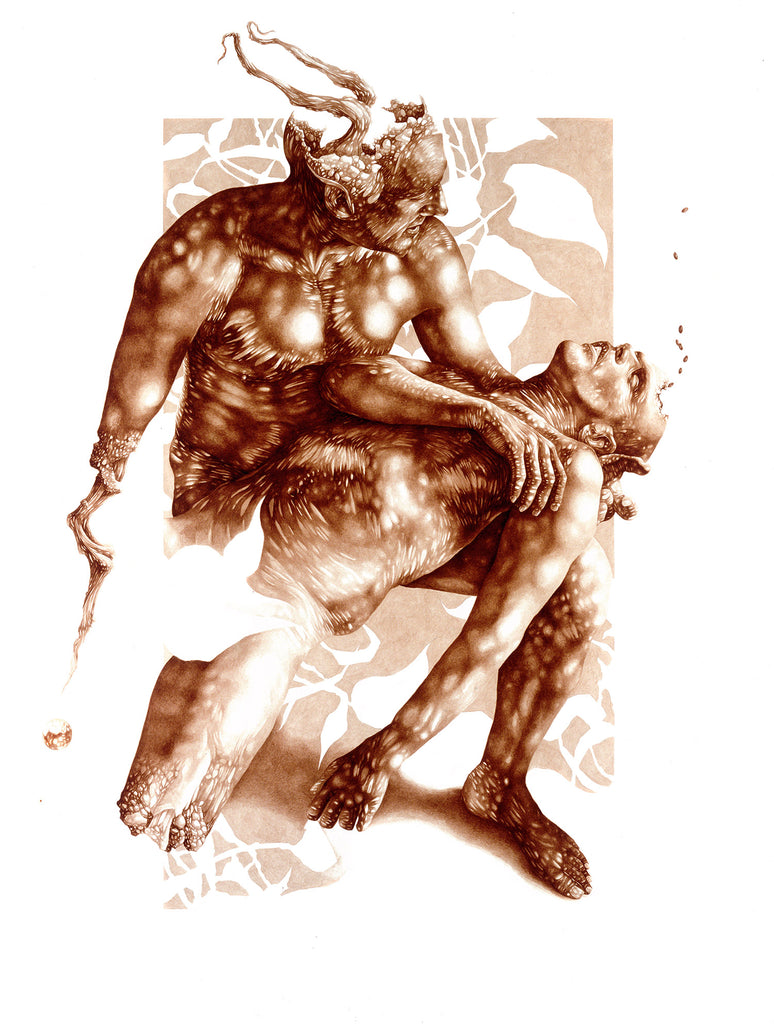
The Sleep.
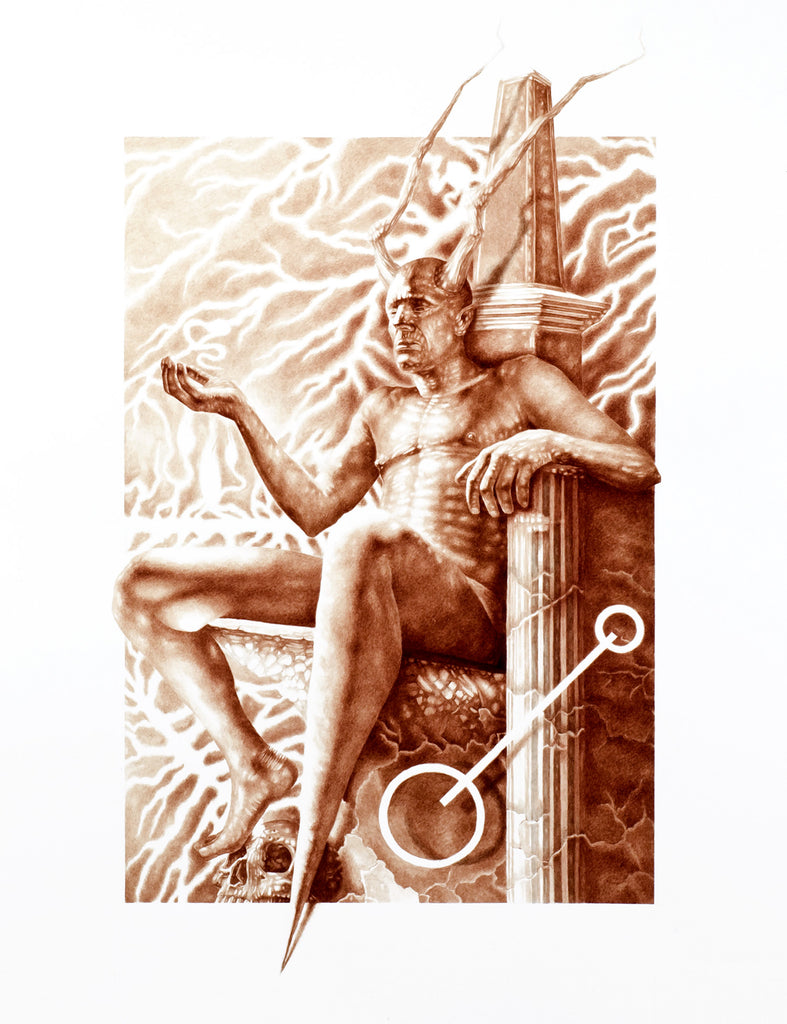
Throne of Stone.
Image via Nathaniel Shannon, Sacred Gallery, NY.
What are you doing when you’re not creating or working on art?
VC: If I’m not working, painting or tattooing, I’m working out. Aside from that, I don’t do a lot of ‘hanging out.’ Shows and special events, cool, but not bars or clubs really.
What other interests do you have?
VC: Music as art has been an equally powerful force in my life. I used to play guitar for an experimental metal band called Human Decline. We made one recording in 2005 which we self-released. Even though the group disbanded years ago, there was still considerable interest so the CD will be released by a small label in Maryland, probably by end of the year.
Where else can we find you?
VincentCastiglia.com
Facebook.com/Vincent-Castiglia-135754724728/
Twitter.com/V_Castiglia

